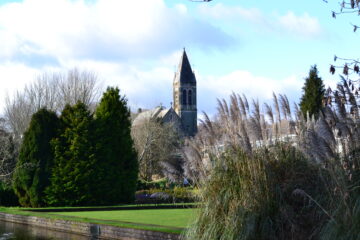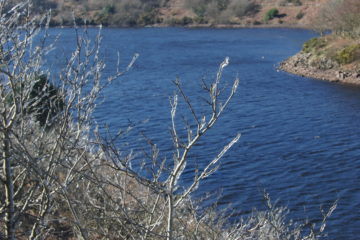The Archangel’s Way (www.devonpilgrim.org.uk/route/archangels-way) is a 35-mile walking route across North Dartmoor that allows you to follow in the footsteps of pilgrims through the ages. It links the churches of St Michael de Rupe, perched on top of Brent Tor to St Michael’s the Archangel in the bustling market town of Chagford, taking in some spectacular scenery along the way. The route connects you to the people who have lived and travelled in the area throughout history, and there is plenty to explore, from Neolithic stone circles to our recent industrial heritage. It also includes 11 historic places of worship. The natural beauty and tranquillity of the surroundings allows walkers to switch off from busy, modern lifestyles and reconnect with nature. The Archangels Way is split into five sections, ranging between 5 and 9 miles in length. The entire route takes 2–4 days to complete and there are alternative ‘Low’ and ‘Moorland’ routes to choose from, depending on your experience and fitness.
One feature to look out for en route is the Sourton Labyrinth. This small stone labyrinth is set into a grassy field behind the church of St Thomas a Becket in Sourton. You’ll find it by taking the path to the right of the church, through the gate towards the Granite Way marker post. A labyrinth is an ancient symbol of wholeness and is designed to foster contemplation and spiritual transformation. Typically formed as a circle with a single path to the centre, labyrinths differ from mazes in that they are designed to help you find your way rather than lose it. The convoluted path means that the walker cannot arrive at their destination quickly, but must undertake a meandering but purposeful journey to get there. This gives time for thought and reconnection with what is important in our lives. Why not pause your journey for a while and spend some time slowly exploring the Sourton Labyrinth?
Other highlights include the stone monuments at Belstone, Cosdon Beacon and Scorhill. Belstone’s Nine Maidens Circle is reputed to have been formed when nine girls from the village were turned into stone as a punishment for dancing on the sabbath. In actual fact, the stones date back to the Bronze Age and form the outer wall of a burial chamber that has long since disappeared.
The triple stone row on the eastern slope of Cosdon Beacon is known locally as “the Graveyard” and it’s easy to see why: the rows of standing stones do indeed look like rows of ancient tombstones. There are nearly 120 stones, which increase in height as you get nearer to the burial cairn at the western edge of the site. It is thought that the rows were originally much longer but many of the stones have been reused over the years for buildings walls. One of the most visually impressive of the many stone circles found on Dartmoor, the circle at Scorhill, in conjunction with the three cairns that can also be found here, originally formed a significant ritual area. Nowadays, only 23 stones are still standing, although there are 11 more lying stones, but there were probably over 60 when the monument was built. You’ll also find the Tolmen Stone, complete with naturally formed hole through it, in a nearby river. The hole is large enough for an adult to pass through, and it is said that all who do so will gain immunity from all rheumatic disorders. For fairly obvious reasons, do not attempt this after heavy rainfall, when the river is in full spate!


